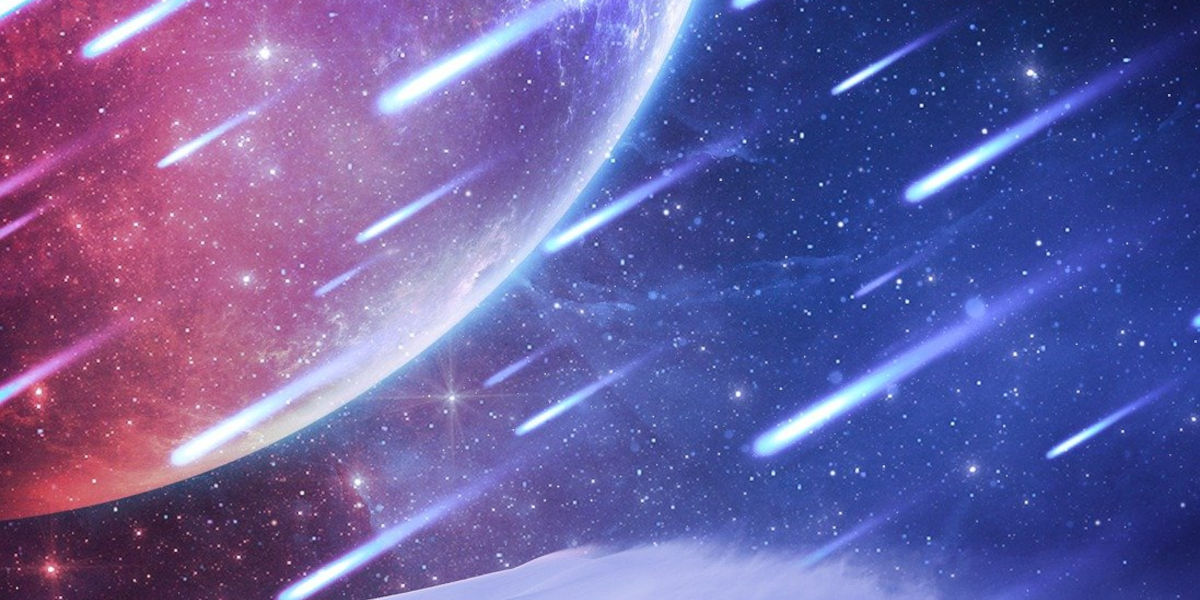In the vast expanse of the night sky, there is a celestial spectacle, the meteor shower phenomenon, that never fails to capture the wonder of spectators across the globe. These mesmerizing displays of shooting stars not only ignite human imagination but also serve as a fascinating study of space and its wandering debris. For those longing for the answers to 'What causes a meteor shower?' and a guide to the 'best meteor shows to watch', we invite you to embark on this cosmic journey of enlightenment.
Grasping the Meteor Shower Phenomenon
Meteor showers, often described as 'raining stars', occur when the earth passes through a cloud of space debris. These fragments - often leftover particles from comets or sometimes asteroids - burn up and disintegrate in Earth's atmosphere, creating a spectacular light show.
The event itself owes its grandeur to the speed at which these particles collide with our planet's atmosphere, rushing at up to 71 kilometers per second. This rapid velocity combined with the friction caused in the atmosphere results in the heating and subsequent glowing of the particles, thereby leading to the splendid meteor shower phenomenon we witness from Earth.
To understand the meteor shower phenomenon better, it’s essential to clarify some common terms. A 'meteoroid' is the initial space debris or particle travelling through space; when it enters Earth's atmosphere and burns up, it's termed a 'meteor'; and should a meteoroid survive its fiery journey through the atmosphere and hit Earth's surface, it's called a 'meteorite'. This journey that these particles undertake is a testament to the engaging spectacle that the universe has to offer and is something that every stargazer should have in their knowledge arsenal.
What Causes a Meteor Shower?
Meteors are essentially the remnants of comets, the icy bodies of space that hurtle around the sun leaving a path of dust and small rocky particles in their wake. When the Earth passes through this debris trail, the particles collide with the atmosphere and disintegrate to form a meteor shower. This process is what causes a meteor shower, transforming what would have been minuscule and unnoticed fragments of space into a captivating light spectacle for us on Earth.
Sometimes, meteor showers can also be caused by the debris left behind by an asteroid. Though similar to a comet, an asteroid is made up of rock and metal and lacks a comet's characteristic icy components. The debris from these asteroids follows a similar trajectory as their comet counterparts, leading to another source of our treasured meteor showers.
Best Meteor Showers to Watch
Throughout the year, the Earth orbits the sun and repeatedly passes through multiple known debris trails left by comets, causing regular meteor showers. These events occur annually and are anticipated by astronomy enthusiasts and casual sky-gazers alike. The most popular ones are the Perseids, which light up the night sky every August, the Lyrids in April, the Leonids in November, and the Geminids in December. Each offers a unique spectacle, and we will delve deeper into their beauty in the subsequent passages of this article.
The Origin of Meteor Showers
Despite their glistening beauty and fleeting sight, meteor showers have a very grounded source, and it's surprisingly not the vast reaches of the cosmos. Instead, their origin is much \closer to home - comets. Comets are chunks of ice and rock that originate from the frigid outer regions of our solar system. As these objects approach the Sun on their orbital path, the heat causes the ice to vaporize, resulting in a trail of dust and debris that follows the comet.
When the Earth moves through this trail of debris, the particles enter our atmosphere and burn up, creating the brilliant spectacle of a meteor shower. Each meteor shower is associated with its respective comet. For example, the famous Perseid meteor shower is associated with Comet Swift-Tuttle, and the Orionid shower is linked to Halley's Comet.
The intensity and frequency of meteor showers can vary year by year, mainly due to gravitational perturbations caused by planets such as Jupiter and Saturn. These effects can cause the dust trails to concentrate or disperse, leading to lesser or greater activity during meteor showers.
Observing Meteor Showers
Observers around the globe have the opportunity to watch these celestial wonders from the comfort of their backyard. One such opportunity occurs annually during the Perseid meteor shower in August, which is known for its fast and bright meteors. However, viewing meteor showers can be a tricky affair and is influenced by factors such as location, weather, moon phase, and light pollution.
If you intend to watch a meteor shower, make sure you're away from city lights as it can significantly hamper the shower's visibility. Also, viewing meteor showers is better when the moon is not full or brightly lit. A dark, moonless sky is ideal for viewing these celestial events. Being prepared with warm clothing, a comfortable chair, and some patience is equally important - it can take up to 20 minutes for your eyes to adjust to the darkness and occasionally you may have to wait for meteors to appear.
Naming Meteor Showers
The nomenclature of meteor showers can seem confusing, but there is a certain logic to it. Meteor showers are usually named after the constellation or the radiant (the point in the sky from which the meteors appear to emanate) they are closest to at the time of peak activity. For example, the Perseids appear to radiate from the constellation Perseus, the Leonids from Leo, and so on. Therefore, knowing your constellations can enhance your meteor shower viewing experience by helping you locate the radiant more easily.
In conclusion, meteor showers are one of nature's most wonderful displays, and understanding their origins and behaviors can enhance our appreciation of these celestial wonders. So, next time you see a "shooting star," remember, you're witnessing a tiny part of a comet disintegrating in our atmosphere – a deep connection between Earth and the celestial sphere.




